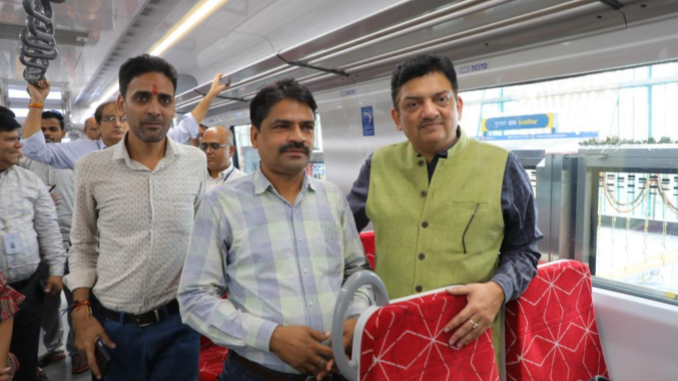
The much-anticipated commencement of commercial operations in the priority section of the Delhi-Ghaziabad-Meerut RRTS corridor began amid excitement and fervour.
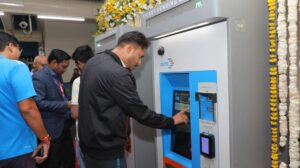
More Details:
The inaugural Namo Bharat train journey, which kicked off at 6 AM, received an overwhelming response from commuters, some of whom arrived as early as 4:30 AM, eager to be a part of this historic journey even from nearby areas like Muradnagar and even from far flung areas in Delhi and UP.
The Prime Minister, Shri Narendra Modi inaugurated the priority section of Delhi-Ghaziabad-Meerut RRTS Corridor at Sahibabad RapidX Station in Ghaziabad, Uttar Pradesh on 20th Oct, 2023. He also flagged off the Namo Bharat RapidX train connecting Sahibabad to Duhai Depot, marking the launch of the Regional Rapid Transit System (RRTS) in India which opened for commercial operations now.
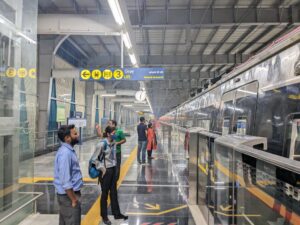
Some Key Features of RRTS corridor:
Namo Bharat train is defining the new journey of New India & its new resolutions, the words of Hon’ble Prime Minister of India reflect the way railway transportation is shaping up in the nation. Adding a dimension to this transformational change, National Capital Region Transport Corporation (NCRTC) has taken a ground-breaking initiative that promises to reshape the way we think about railway signalling & passenger safety. This game-changing initiative makes history by introducing several never-before-seen dimensions of railway signalling.
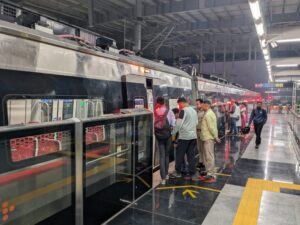
ETCS Level 2 & Hybrid Level 3 on LTE:
- One of the most significant advancements in NCRTC’s initiative is the implementation of ETCS (European Train Control System) Level 2 & Hybrid Level 3 signalling system over LTE (Long-Term Evolution) communication. The introduction of Hybrid Level 3 signalling combined with LTE communication backbone represents a historic moment for the rail industry.
- It ensures enhanced safety, significantly increases line capacity & operational efficiency. This is the first time globally that such an integrated approach has been introduced. ETCS Level 2, with its automatic train protection & monitoring capabilities, combined with Hybrid Level 3 system, takes railway signalling to unprecedented heights of safety & efficiency.
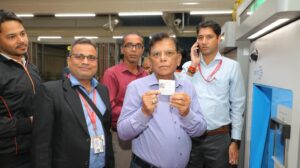
Platform Screen Door (PSDs) Integration with ETCS:
- Passenger safety has always been a top priority for the rail industry, & NCRTC has taken it to the next level by integrating PSDs with ETCS.
- This ensures a seamless & secure environment for passengers waiting on the platforms, protecting them from potential hazards & unauthorised access to tracks.
- Presently, it has been implemented with dedicated wifi for train to track side communication which is planned to be shifted to ETCS in next few months.
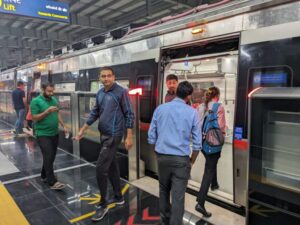
Transforming the Landscape of Signalling Media:
- While the rail industry has been struggling to completely adopt GSM-R (Global System for Mobile Communications for Railways), NCRTC has stepped forward to offer a transformative solution, i.e. the use of LTE technology for ETCS communication.
- It enhances communication reliability and provides a more versatile & adaptable platform for future railway signalling innovations.
- The introduction of ETCS Level 2 & Hybrid Level 3 on LTE, integration of PSDs, & utilisation of LTE as signalling medium have set new standards in safety & efficiency. This transformational approach sets a precedent for a brighter, more secure & more efficient future for rail travel.
- The world will be watching with great anticipation as other regions & railway networks consider adopting these remarkable advancements in signalling technology pioneered by NCRTC.
Source: NCRTC- Press Release | Images Credit: NCRTC

